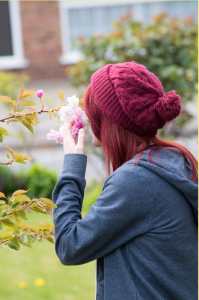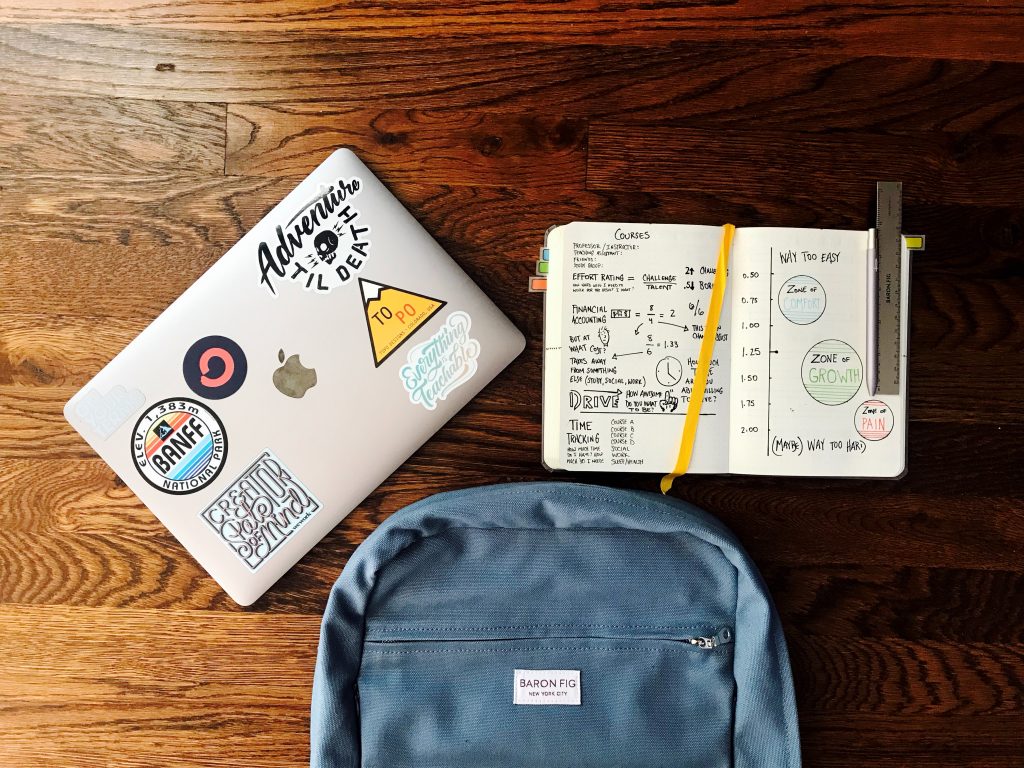5 Practical Ways to Take Control of your Happiness

Photo by Melissa Askew on Unsplash
5 Practical Ways to Take Control of your Happiness – for Teen Girls (and Parents too!) You know that feeling you get when you’re having a great time with your best friend or you’re doing something you love so much… that feeling of happiness? Well, lately I’ve been thinking a lot about happiness when it comes to my own life and the world of the teen girls I work with.
Oftentimes, they tell me how little they experience joy, motivation, excitement, contentment, peace, and happiness. Their lives are filled with stress, anxiety, pressure, sadness, and sometimes feeling nothing. The thought-feeling loops continue to feed each other, whether it’s sadness, anxiety or whatever they are experiencing. And it’s hard to break out of those cycles once they get started. As a parent looking from the outside-in, you might feel the urge to scoop them up in a great big hug and tell them it’s all going to be ok or shake them (gently) and say please snap out of it!

Photo by Szilvia Basso on Unsplash. 5 Practical Ways to Take Control of your Happiness
I’ve decided this month to do some digging into this thing called happiness. I’m just chipping away at the tip of the iceberg and learning there is so much to this concept- What is happiness? Why do humans seek it? How much influence do we have over our own happiness?
I’ll be going down the rabbit hole a few times this month, I’m sure. I’ve started my journey of rediscovering happiness by reading “The Happiness Project by Gretchin Rubin” and I’m taking the Science of Happiness course by Berkeley University of California.
Research suggests that a person’s happiness is made up of things like their genes and circumstances, but up to 40% is determined by a person’s daily actions! So, in fact, your daughter (and you) have a lot of sway when it comes to your levels of happiness. I want to backtrack a minute because the definition of happiness and the interpretation of what that means can be so different for people- so for the purposes of this article, when I’m saying happiness, I’m thinking about her subjective interpretation of well-being (how good am I feeling right now and overall, how satisfied am I with my life).
Whether you’re a parent of a teen girl or you’re a teen, let’s get into some practical ways you can start bringing more happiness into your life:
What makes me feel happiness?
You are uniquely you. From your personality to your interests and strengths, you have your own unique profile. In order to bring more happiness into your life, a good place to start is to know what makes you happy. It will most likely change over time, you’ll add new things to your list and drop others. If you stop and think to answer that question, what comes to mind?
I asked myself and a few others in my life and these are just some of the ideas that came up –
- Hearing people laugh
- Being near water
- Learning new things
-

Photo by Liz Sanchez on Unsplash. 5 Practical Ways to Take Control of your Happiness
Completing a goal or task
- My daughter, best friend, partner, mom, dad, etc.
- My dog, cats, hamster, etc.
- Gatherings with the people I love
- Loud family dinners
- Hiking
- Reading
- Heavy blankets
- Being in nature/outdoors
- Watching my kid do their thing
- Giving gifts to others
- Good morning texts
- Playing hockey
- Smell of freshly fallen leaves
- Receiving small gifts
- A massage
- Travelling with my sister
- Listening to music
- The sound of the ocean
- Singing birds
- Quality time with loved ones
- Yoga
- Cup of tea
- Funny movies
- An afternoon nap
- Dancing
What’s on your list?
Happiness – See it, Feel it, Hear it, Taste it, Smell it
I’m a food person- like I can truly appreciate the most delectable meal and feel like I am in tastebud heaven. My mom makes the most amazing manicotti. Just writing about it reminds me of the warm savoury tomato-cheese smell, the flavour explosion when I take a bite and the popping colour contrasts of the spinach, tomatoes, and pasta. In that moment and even now thinking about it, it puts a smile on my face.

Photo by Florendia Vaidana on Unsplash. 5 Practical Ways to Take Control of your Happiness
Some say happiness is found in the pleasures we experience in life. Whether it’s what you’re seeing, hearing, feeling, etc., paying attention to your world through your senses can turn the decibels up on your happiness.
You can try this a couple of ways. First, try thinking of something you already know makes you happy. It might be something from the list you created above. Let’s say you pick being with your best friend. Try thinking of that person and the thing you might be doing together and imagine what you see in front of you. Imagine your best friend’s characteristics, what they are wearing, the space you are hanging out in, the colours and objects surrounding you.
Ok now try imagining what you would hear, your best friend’s voice, their laughter, music or noise playing in the background, a familiar buzz of the place you’re hanging out in, etc. Do this with all of your senses and really experience that thing that makes you happy in full way. You can do this exercise at any moment to recall that great feeling and bring happiness into your present moment. You can also try this exercise while you’re doing the thing you enjoy and take a few seconds to check-in through each of your senses.
The second exercise you can do to bring more happiness through your senses is to actively treat yourself to more pleasure. Think of things that are pleasing to each of your senses and include those as much as you can in your daily routine. Below are a few ideas for each sense.
Visual/seeing

Photo by Roman Melnychuk on Unsplash. 5 Practical Ways to Take Control of your Happiness
- Decorate your room with your favourite words or colours
- Wear clothing that appeals to you
- Get outside in nature and look around
- Read a book
- Hang a new piece of art
- Choose a new background for your phone/computer/tablet
- Paint
Feeling/touch
- Pick out clothing that feels nice to the touch
- Add some new bedding
- Fidgets
- Take a bath
- Pet a soft animal
- Get a massage/give yourself a massage
- Dress extra cozy
Hearing/sound
- Make/play a favourite upbeat playlist
- Try sound dampening for a period of time
- Listen or watch something funny
- Listen to sounds of nature (e.g. waterfalls, rivers, animals, etc.)
- Try autonomous sensory meridian response (ASMR)
Smell
- Bake/cook
- Use essential oils
- Make a cup of hot chocolate
- Hug your favourite person and give them a good sniff (I know sounds a little bizarre- but trust me)
- Smell your favourite article of clothing
- Use a really nice smelling shampoo
- Think of the smells of nature you most enjoy
- Remember smells from your childhood that remind you of happy memories

Photo by Canva. 5 Practical Ways to Take Control of your Happiness
Taste
- Bake/cook
- Take your time when eating something you enjoy
- Use flavoured gum or mints
- Drink plenty of water
- Experiment with new foods/drinks
Bringing happiness to the greatest number of people
Turns out when you do things for others it actually boosts your own happiness. It is kind of a mind over matter thing in some ways. If you’re grumbling and not really happy about doing the thing for the other person, likely you won’t get the happiness perks. But if you are doing something kind for someone else or you feel like you are contributing to someone else’s well-being in some way, you will also reap the benefits of increased happiness. Volunteering or joining a group that has the wellness of others in mind is a great way to do this. You can also look at singular acts, like making or getting a thoughtful gift for someone, helping someone with their chores, offering to lend a hand without being asked, asking someone about their day, sending someone a “I’m thinking of you” text, etc. It doesn’t have to a huge gesture, anything that adds to the happiness factor of another person, will count towards yours as well.
Connection and Happiness
As a general rule, people are social beings. You benefit from feeling connected to others and it’s a pretty natural desire that most of us have. To take control of your happiness in this area, think about the current friendships and relationships you have. Who is a part of your inner circle? Do they have your back, lift you up, support you?
You can think of the people in your world and put them into 3 basic categories – you have your toast, sweet milk, and your sour grapes. Looks like I’m making this about food again. Your toast people are kind of plain, neutral if you will. They are the people you might consider acquaintances, maybe you talk to them sometimes, maybe they are part of a larger friend group or a relative you don’t see that often, and you really don’t have a ton of positive or negative associations with them. You also have your sweet milk people. They are the people you most like in this world. They have your back, treat you well, support you, you enjoy their company most of the time, and you have positive feelings towards them. Then you have your sour grapes. They are the people that don’t treat you well, maybe they lie, break promises, backstab, bully, are two-faced, and overall when you think of them you are probably conflicted or feel pretty negative about them.

Photo by Omar Lopez on Unsplash. 5 Practical Ways to Take Control of your Happiness
In order to boost your happiness, you want to put time and energy into your sweet milk people. The more you focus on those relationships and making those a top priority the less room it leaves for sour grapes to spoil the day. Chances are you’ll also have many more moments of positive feelings when you’re with your sweet milks. Don’t have a lot of sweet milk people in your life?
Here are a few articles on how to meet new people:
- Teenagers Making Friends – Can Parents Help?
- 10 Ways to Meet New People – A Message for Teens
- How to Make Friends Easily if You’re a Teen
Move your body to find happiness
I know, it probably doesn’t need to be said, sleep and exercise are good for you. You know this, I’m sure. Happiness is something that is felt in the body just as much as in your mind. You can use movement in your body to up your levels of happiness. Mercey Livingston wrote an article here on 4 ways exercise makes us happier and Dr.Debra Fulghum Bruce writes about the chemical responses that happen in our body and how to consider the “right” movement for you.

Teens in image used in article on this blog called, 5 Practical Ways to Take Control of your Happiness
Whether you are dancing, running, doing yoga, skiing, walking, hiking, going to the gym, playing a sport, stretching, or standing in your power poses, physical movement is a great way to increase happiness. It’s important to start where you are and move from there. If you do very little movement throughout your day and you imagine yourself exercising each day, but that seems impossibly unmotivating, start small. Take your dog for a short walk, call a friend and walk through the mall or shoot on some basketball hoops, choose a beginner workout video and follow along, etc. Be kind to yourself through the process and watch as your happiness meter climbs.

5 Practical Ways to Take Control of your Happiness
Chantal Côté (she/her) is a psychologist and teen life coach living in Calgary, Alberta. After over a decade in non-profit and community mental health, Chantal started Pyramid Psychology, a practice dedicated to supporting teens – a population she is constantly amazed by. Chantal is on a mission to help 100,000 teen girls (and their parents) build bulletproof mindsets so they can weather the ups and downs of life. As part of this goal, Chantal has had the privilege of speaking at various events – virtual and live – to support teens and parents.
Outside of this passion, Chantal is often in nature, writing poetry, playing ball hockey and hanging out with her loved ones.
Each week, Chantal writes a blog article in response to issues she hears from the parents and teens she connects with.
If you have something you’d like to read more on – email ideas and questions to info@pyramidpsychology.com or DM us via Instagram or Facebook.




 experiencing depression, in order to be there for her for the long haul, you’ll want to ensure you’re in a good place, filling your cup consistently, so you
experiencing depression, in order to be there for her for the long haul, you’ll want to ensure you’re in a good place, filling your cup consistently, so you  I have heard things like:
I have heard things like:





 Jessa is a counsellor that has recently completed her master of counselling degree through Athabasca University.
Jessa is a counsellor that has recently completed her master of counselling degree through Athabasca University.

 Oftentimes, teens wish they could simply take a pill and fix their depression, but this is often not a long-term solution.
Oftentimes, teens wish they could simply take a pill and fix their depression, but this is often not a long-term solution. 

 Chantal Côté (she/her) is a psychologist and teen life coach living in Calgary, Alberta. After over a decade in non-profit and community mental health, Chantal started
Chantal Côté (she/her) is a psychologist and teen life coach living in Calgary, Alberta. After over a decade in non-profit and community mental health, Chantal started 




































